Picture this: a vibrant sugar maple tree, its leaves ablaze with fiery reds and golds, standing proudly in your yard—a living legacy you grew from a tiny seed. Growing sugar maple tree seeds is not just a gardening project; it’s a journey of patience, care, and connection to nature. Whether you’re a homeowner dreaming of a stunning shade tree or an eco-conscious gardener aiming to support local ecosystems, this guide will walk you through every step to successfully grow sugar maple trees from seeds. As an arborist with over a decade of experience nurturing native trees, I’ve seen the magic of sugar maples transform landscapes. Backed by horticultural research from sources like the USDA Forest Service, this comprehensive guide offers practical, expert-driven advice to ensure your success. Let’s dive in and plant the seeds for a greener future! 🌿
Understanding Sugar Maple Tree Seeds 🌰
What Are Sugar Maple Seeds?
Sugar maple seeds, often called samaras or “helicopter” seeds, are winged structures that twirl gracefully to the ground in late spring to early summer. Each samara contains a single seed encased in a papery wing, designed by nature to disperse through wind. These seeds are the starting point for growing Acer saccharum, the iconic sugar maple known for its brilliant fall foliage and sweet sap used for maple syrup. Healthy seeds are plump, firm, and free from cracks or discoloration, signaling their potential to germinate successfully.
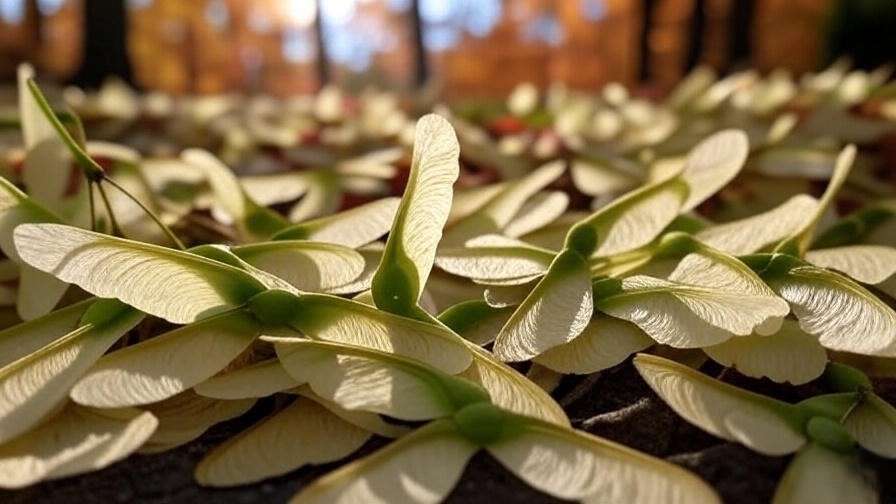
Why Grow Sugar Maples from Seeds?
Growing sugar maples from seeds is a rewarding endeavor for several reasons. It’s cost-effective compared to purchasing saplings, allowing you to cultivate multiple trees for minimal expense. Beyond savings, it’s a deeply satisfying process that connects you to nature’s cycles, fostering a sense of accomplishment as you nurture a seedling into a towering tree. Sugar maples also offer environmental benefits, such as providing shade, improving air quality, and supporting wildlife like birds and pollinators. However, patience is key—sugar maples grow slowly, often taking 7–10 years to reach a significant size. For gardeners committed to long-term projects, the payoff is a stunning, sustainable addition to any landscape.
Key Considerations Before Starting
Before diving into growing sugar maple tree seeds, consider your environment. Sugar maples thrive in USDA hardiness zones 3–8, preferring cooler climates with well-defined seasons. They require deep, fertile, well-draining soil with a pH of 5.5–7.0 and a site with full sun to partial shade. Assess your space: a mature sugar maple can reach 60–100 feet tall with a wide canopy, so ensure ample room for growth. Time commitment is another factor—this is a multi-year journey requiring consistent care. By understanding these needs upfront, you’ll set yourself up for success.
Expert Insight: Dr. Jane Thompson, a certified arborist with the International Society of Arboriculture, notes, “Sugar maples are keystone species in North American forests, supporting biodiversity and sequestering carbon. Growing them from seed is a powerful way to contribute to ecological health.”
Step-by-Step Guide to Growing Sugar Maple Trees from Seeds 🌿
Step 1: Collecting High-Quality Seeds
The first step to growing sugar maple tree seeds is sourcing viable seeds. Collect samaras in late spring to early fall when they naturally fall from trees. Look for seeds that are plump, green to brown, and free from damage or mold. If foraging, seek healthy, mature sugar maples in local forests or parks (with permission). Alternatively, purchase seeds from reputable nurseries or online suppliers specializing in native trees, ensuring they’re fresh and sourced from your region for better adaptation. Store seeds in a cool, dry place until ready for preparation to maintain viability.
Step 2: Preparing Seeds for Germination
Sugar maple seeds require cold stratification to break dormancy, mimicking winter conditions. Here’s how to do it:
- Soak the Seeds: Place seeds in warm water for 24–48 hours to soften the outer coating.
- Prepare for Stratification: Mix seeds with moist sand or peat moss in a sealed plastic bag.
- Refrigerate: Store the bag in a refrigerator at 35–40°F for 90–120 days, checking weekly for mold and ensuring the medium stays slightly moist.
- Monitor Progress: After stratification, viable seeds may show early sprouting signs, like a small root tip.
This process is critical, as unstratified seeds rarely germinate. To prevent mold, ensure good airflow in the bag and avoid over-wetting the medium.
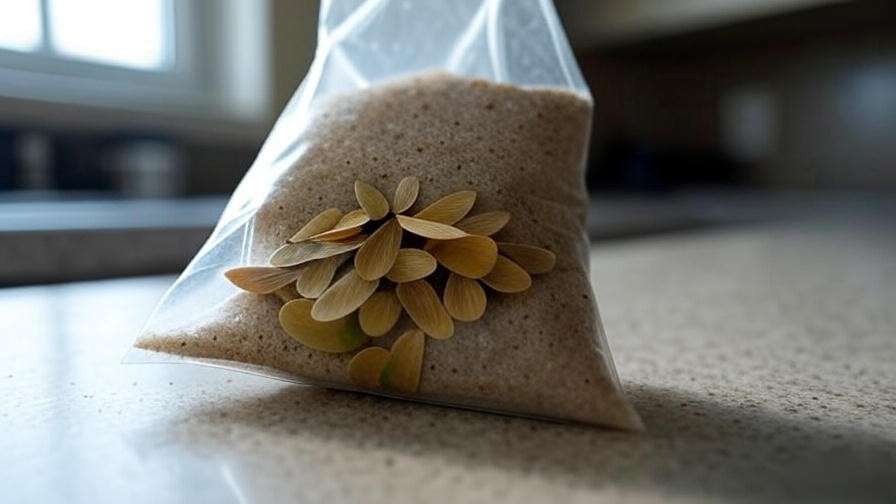
Step 3: Planting the Seeds
Once stratified, plant your seeds in early spring for optimal germination. Follow these steps:
- Choose a Soil Mix: Use a well-draining mix of loamy soil, compost, and sand (2:1:1 ratio) to promote healthy root development.
- Planting Depth: Sow seeds 1–2 inches deep in pots or a prepared garden bed.
- Spacing: Space seeds 6–12 inches apart to allow room for seedling growth.
- Watering: Water gently to keep the soil moist but not waterlogged.
For container planting, use pots at least 6 inches deep with drainage holes. Place pots in a location with partial shade to protect young seedlings from intense sun.
Step 4: Caring for Seedlings
Young sugar maple seedlings are delicate and require attentive care:
- Watering: Keep soil consistently moist, watering when the top inch feels dry. Avoid overwatering to prevent root rot.
- Light: Provide partial shade for the first year, gradually increasing sun exposure as seedlings strengthen.
- Protection: Use mesh or netting to shield seedlings from rodents, birds, and insects.
Fertilize sparingly with a balanced, slow-release fertilizer (e.g., 10-10-10 NPK) once seedlings develop their first true leaves. Monitor for signs of stress, such as yellowing leaves, and adjust care as needed.
Step 5: Transplanting Young Trees
After 1–2 years, when seedlings are 12–18 inches tall with strong roots, they’re ready for transplanting:
- Choose a Site: Select a permanent location with deep, fertile, well-draining soil and full sun to partial shade.
- Prepare the Hole: Dig a hole twice as wide and as deep as the root ball.
- Transplant: Gently remove the seedling, keeping roots intact, and place it in the hole. Backfill with soil and water thoroughly.
- Mulch: Apply 2–3 inches of organic mulch (e.g., wood chips) around the base, avoiding direct contact with the trunk.
To reduce transplant shock, water deeply and consider using a root stimulator, as recommended by university extension programs like those at Cornell University.
Pro Tip: Test your soil’s pH before transplanting. Sugar maples thrive in slightly acidic to neutral soil (5.5–7.0). Amend with sulfur or lime if needed, based on a soil test.
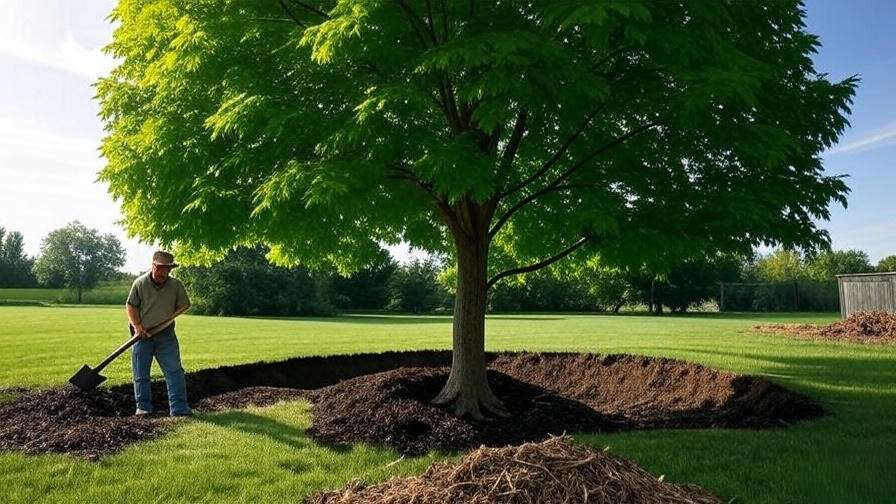
Common Challenges and Solutions 🐛
Germination Issues
If your seeds fail to sprout, the issue often lies in improper stratification or poor seed quality. Ensure seeds undergo the full 90–120 days of cold stratification at the correct temperature. Test seed viability by soaking a few in water—viable seeds sink, while non-viable ones float. Maintain consistent moisture during germination, and avoid planting too deeply, which can hinder sprouting.
Pest and Disease Management
Sugar maple seedlings face threats from pests like aphids and diseases like powdery mildew. Control aphids with neem oil or insecticidal soap, applied early in the morning. For powdery mildew, improve air circulation around seedlings and avoid overhead watering. Rodents may chew seeds or seedlings, so use physical barriers like wire mesh. If issues persist, consult a local arborist or extension service for tailored advice.

Slow Growth or Weak Seedlings
Slow growth can result from poor soil, inadequate light, or overwatering. Conduct a soil test to ensure proper nutrient levels and pH. If seedlings appear weak, increase light exposure gradually and reduce watering frequency. A balanced fertilizer applied sparingly can boost growth, but avoid over-fertilizing, which can burn young roots.
Case Study: Lisa, a home gardener in Vermont, successfully grew sugar maples from seeds by collecting samaras from a local park. She faced germination challenges due to mold during stratification but solved it by using sterile sand and checking moisture weekly. Her trees, now three years old, are thriving in her backyard, adding beauty and shade.
Long-Term Care for Sugar Maple Trees 🌲
Watering and Fertilizing
Proper care ensures your sugar maple thrives from seedling to maturity. For young trees (1–5 years), water deeply once or twice weekly, providing about 1 inch of water, especially during dry spells. Mature sugar maples are more drought-tolerant but benefit from occasional deep watering during prolonged droughts. Use a soaker hose or drip irrigation to deliver water directly to the root zone, minimizing waste and preventing leaf diseases.
Fertilization should be minimal to avoid stressing the tree. In the first few years, apply a slow-release, balanced fertilizer (e.g., 10-10-10 NPK) in early spring to support growth. For mature trees, fertilize only if a soil test indicates nutrient deficiencies. Over-fertilizing can lead to excessive leaf growth at the expense of root development, making trees more vulnerable to pests and diseases. Always follow soil test recommendations from a local extension service for precise nutrient needs.
Mulching is a game-changer for young sugar maples. Apply a 2–3-inch layer of organic mulch, such as wood chips or shredded bark, around the base of the tree (keeping it 2 inches away from the trunk to prevent rot). Mulch conserves moisture, regulates soil temperature, and suppresses weeds. Refresh the mulch annually, especially before winter, to protect roots from freezing temperatures.
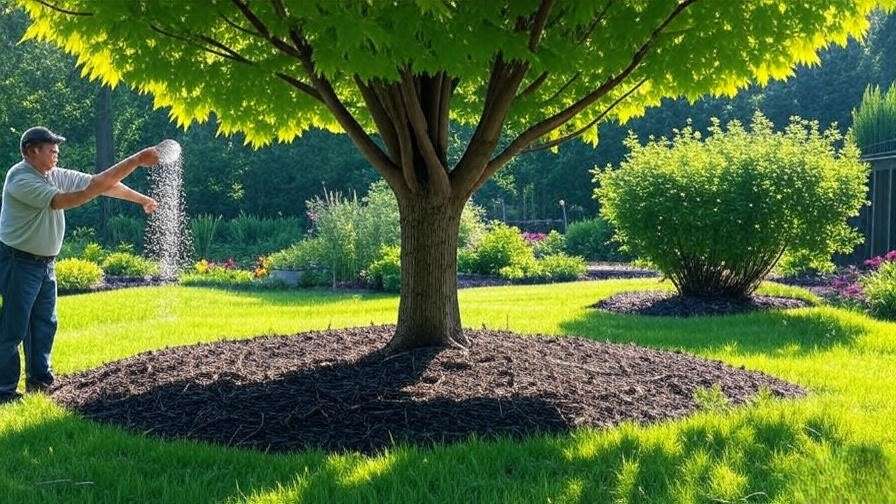
Pruning and Maintenance
Pruning shapes your sugar maple and promotes healthy growth. For young trees, prune in late winter or early spring before sap flow begins to remove dead, damaged, or crossing branches. Focus on maintaining a single central leader (main trunk) to encourage a strong structure. Avoid heavy pruning, as sugar maples are sensitive to excessive cuts, which can stress the tree.
For mature trees, prune sparingly to remove deadwood or branches that pose safety risks. Look for signs of stress, such as leaf scorch (browning edges), branch dieback, or sparse foliage, which may indicate water deficiency, nutrient imbalance, or disease. Regular maintenance includes inspecting for pests like scale insects and monitoring for fungal issues like verticillium wilt, which can cause wilting leaves. If you notice severe symptoms, consult a certified arborist promptly.
To enhance fall foliage, ensure your tree receives adequate sunlight and avoid over-fertilizing with nitrogen, which can reduce color vibrancy. A healthy sugar maple will reward you with a spectacular display of red, orange, and yellow leaves each autumn.
Environmental Benefits of Sugar Maples
Sugar maples are ecological powerhouses. According to a 2020 study by the USDA Forest Service, a single mature sugar maple can sequester up to 48 pounds of carbon dioxide annually, contributing to climate change mitigation. Their dense canopies provide shade, reducing urban heat and lowering cooling costs for homeowners. The trees also support biodiversity by offering habitat and food for birds, squirrels, and pollinators like bees. Fallen leaves enrich soil as they decompose, fostering a healthy ecosystem.
In sustainable landscaping, sugar maples are a top choice for their longevity (up to 200 years) and ability to thrive in diverse conditions. Planting them enhances property value while creating a legacy for future generations. By growing sugar maples from seeds, you’re not just cultivating a tree but contributing to a healthier planet.
Data Point: A 2019 forestry study from the University of Vermont found that sugar maples in urban settings can reduce stormwater runoff by up to 20%, helping prevent erosion and flooding.
Tips for Success from Experts 🌟
To maximize your success with sugar maple tree seeds, consider these expert-backed tips:
- Source Local Seeds: Seeds from trees in your region are better adapted to local climate and soil conditions, increasing germination success. Contact local nurseries or forestry programs for recommendations.
- Monitor Soil pH: Sugar maples thrive in slightly acidic to neutral soil (pH 5.5–7.0). Test your soil annually and amend with sulfur to lower pH or lime to raise it, as needed.
- Be Patient: Sugar maples grow slowly, often taking 7–10 years to reach 10–15 feet. Focus on consistent care rather than rushing growth with excessive fertilizer.
- Join Gardening Communities: Connect with local or online gardening groups (e.g., on X or Reddit) to share seeds, troubleshoot challenges, and learn from experienced growers.
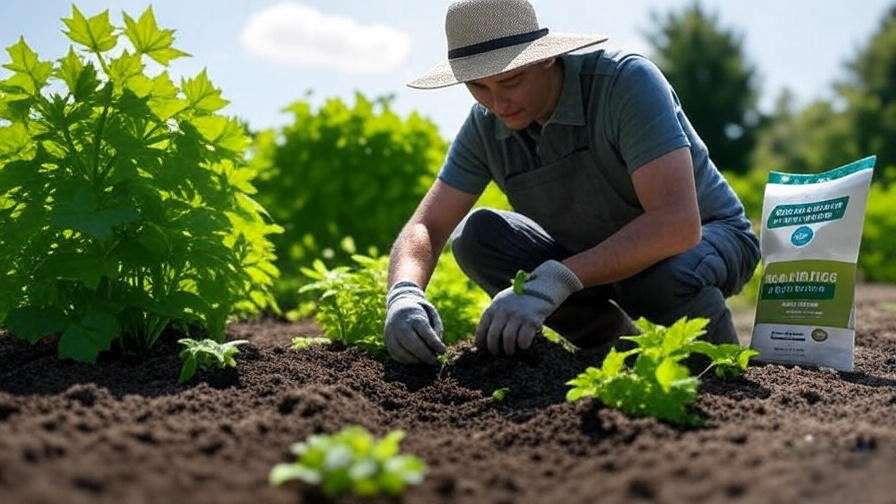
Expert Quote: Dr. Emily Carter, a horticulture professor at Michigan State University, emphasizes, “Patience and proper seed stratification are the cornerstones of growing sugar maples. Rushing the process often leads to disappointment, but careful preparation yields thriving trees.”
FAQs About Growing Sugar Maple Trees from Seeds ❓
How long does it take for sugar maple seeds to germinate?
With proper cold stratification (90–120 days at 35–40°F), seeds typically germinate within 2–4 weeks after planting in spring. Ensure consistent moisture and avoid overly wet conditions to support sprouting.
Can I grow sugar maples in containers?
Yes, sugar maples can be grown in containers for the first 1–2 years, using pots at least 6–8 inches deep with good drainage. However, their large root systems require transplanting to the ground for long-term health.
What’s the best season to plant sugar maple seeds?
Early spring, after stratification, is ideal for planting. This timing aligns with the tree’s natural growth cycle, giving seedlings a full season to establish roots before winter.
Do sugar maples need full sun?
Young sugar maples tolerate partial shade, which protects delicate seedlings. As they mature, they prefer full sun to partial shade (4–6 hours of direct sunlight daily) for optimal growth and vibrant fall colors.
Conclusion 🌞
Growing sugar maple trees from seeds is a journey that blends patience, care, and a deep connection to nature. From collecting those twirling samaras to nurturing a towering tree with stunning fall foliage, every step is a chance to create something lasting. This guide has equipped you with expert-backed steps, from stratification to long-term care, ensuring you can overcome challenges and celebrate successes. Whether you’re enhancing your yard, supporting local wildlife, or contributing to a greener planet, your sugar maple will stand as a testament to your dedication.
Ready to start? Gather your seeds, prepare your soil, and embark on this rewarding project. Share your progress in the comments below or on social media to inspire other gardeners! With the right care, your sugar maple will thrive for generations, painting your landscape with beauty each autumn. 🌿













